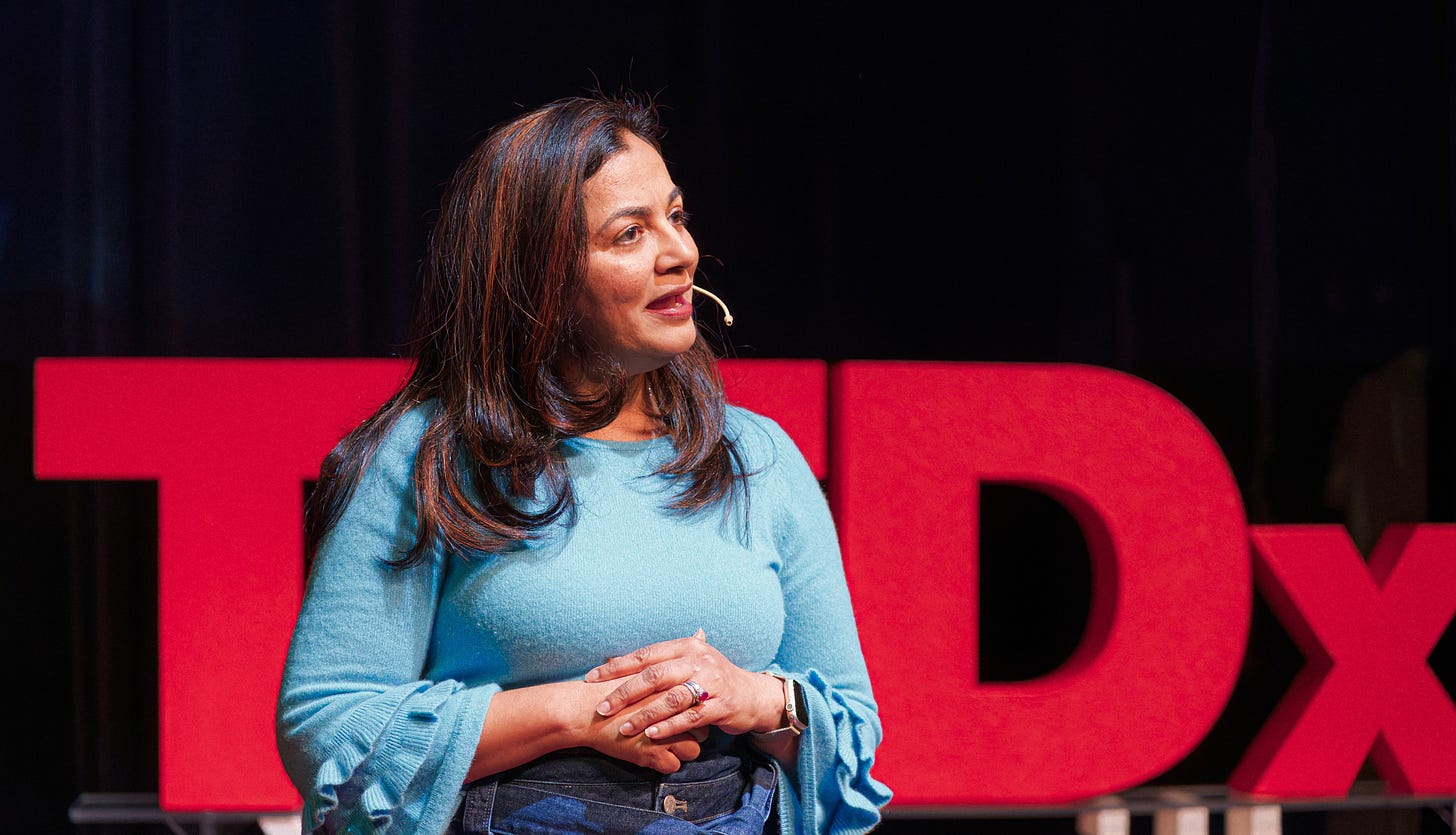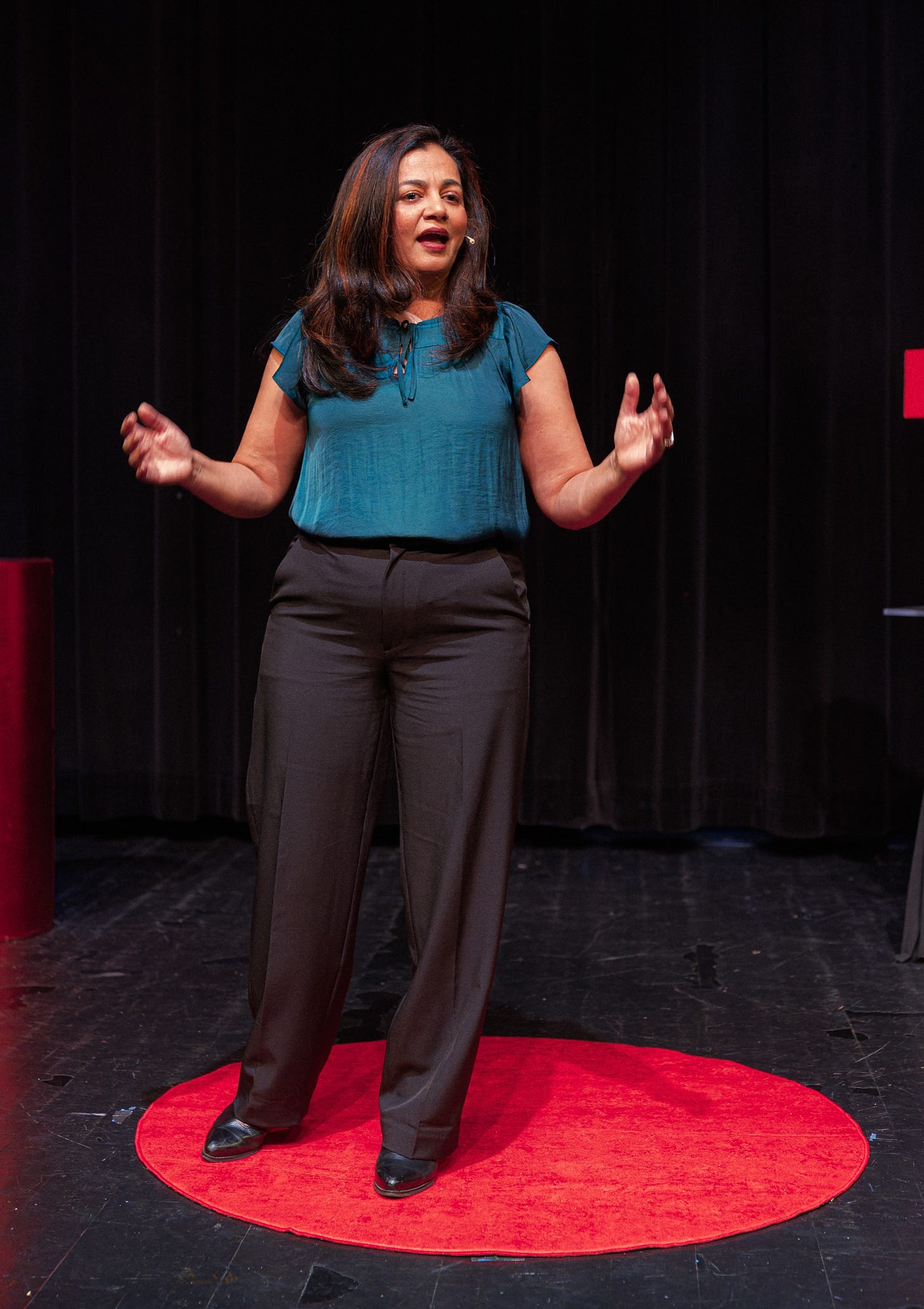I work with many clients who have a visceral reaction to this question
"So what do you do to invest in yourself?”
The question really has gotten under the skin of at least two women who went on to become my clients.
She told me later, "That question really bothered me. But I'm glad that you asked it because I needed to actually really think about what it meant to invest in myself. I invest in vacations. I take care of my parents, my brother. But -really what do I do to invest in my own personal growth?”
Not telling stories about the problem you solve is faulty thinking for 3 reasons:
• You’re not getting credit as the subject matter expert that you already are
• You’re highly technical, but not speaking to the masses
• You’re not communicating who you are as a whole person
Even after I explain this, so many people come back to me and say:
“I don’t have time”
You can overcome this by working with someone who condenses what could take 3 years into 3 weeks.
I teach the TEDxTalk methodology of public speaking because so much of what makes a good TEDxTalk also makes for good business.
Let me share about Tasneem
When she first came to work with me, she thought she was preparing to give a TEDxTalk.
What she didn’t realize was that she was about to completely transform how she showed up in rooms—forever.
She believed she was a good storyteller. But as we worked together, she saw the cracks in how her communication —-was received. When she was asking to collaborate with a teammate, it came across as ‘asking permission.’ She wasn’t offering context.
She chalked some of it up to her background. She’s Indian and in her culture, people were deferential in the workplace. But that deference was costing her visibility, clarity, and credit.
It wasn’t about lack of intelligence—it was about lack of access to the right language.
I would spend a lot of time curating my messages. Then I would get behind on things.
She would give the brief on a project. Heads would nod.
But later, she realized there were gaps. Her teammates didn’t quite get the action items and who was responsible for it.
I'd let let my work speak and be quiet in meetings, but I watched other people take credit. I got frustrated because I do need the recognition to keep motivated.”
She was tired of being overlooked.
Through the TEDx prep process, she learned more than how to give a talk. She learned how to own the room.
She learned to be more accessible in her language. She learned to speak the language of her teammates and meet them where they were. They instantly trusted her as the subject matter expert on the project.
She started acting like a decision-maker.
She began sending an agenda ahead of meetings ,outlining items to cover. Folks attending could add missing items, making the meeting more collaborative. During the meeting, she learned to ask bolder questions such as “What is the action item?” After the meeting, she sent a recap so there was clarity about both the action items and who was responsible.
And most importantly, she stopped letting her work speak for itself—she spoke for it.
The result?
She wasn’t just “prepped for TED.” She stepped into a new level of executive presence.
She stopped fading into the background and started being seen as the subject matter expert she had always been.
I need to build my executive presence. Can you help me?
Hey I'm glad to hear it. Sure. Being a TV anchor for 27 years and interviewing CEOs, I know how a commanding presence unlocks opportunities and doors that were closed before. You could take my "art of influence" course















Share this post